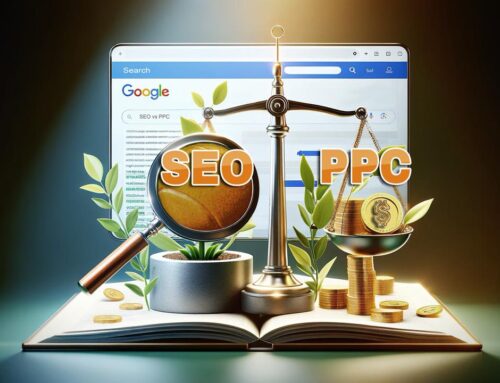Product Market Fit is a fundamental concept in the startup world, representing the perfect alignment between a product’s value proposition and the specific needs of its target market. It’s a crucial determinant of a business’s potential for growth and success. Understanding this concept is vital for entrepreneurs and business leaders, as it forms the backbone of a successful venture. In this deep dive, we’ll explore the intricacies of Product-Market Fit, its significance, and the journey towards achieving it.
Key Takeaways
- Product-Market Fit is crucial for aligning a product with its target market’s needs, ensuring customer satisfaction and business growth.
- The concept, historically shaped by industry leaders, is vital for startups and established businesses to navigate market dynamics effectively.
- Achieving Product-Market Fit is essential for attracting investments, driving sustainable growth, and scaling business operations.
Table of Contents
- What is Product-Market Fit?
- History and Evolution of Product-Market Fit
- Why Product-Market Fit Is Crucial
- How to Achieve Product-Market Fit
- Measuring Product-Market Fit
- Success and Failure Examples
- After Achieving Product-Market Fit: What Next?
- Frequently Asked Questions
- Conclusion
What Is Product-Market Fit?
Product-Market Fit is a term coined within the startup community, signifying a scenario where a product satisfactorily meets the demands of its market. Investor and Netscape co-founder Marc Andreessen eloquently defined it as being in a “good market with a product that can satisfy that market”. Achieving this fit is about more than just launching a product; it’s about ensuring there’s a market demand for your idea and that people are willing to pay for it because it surpasses alternatives.
History and Evolution of Product-Market Fit
The concept was developed by Don Valentine of Sequoia Capital and named by Andy Rachleff of Benchmark Capital. It was later popularized by Marc Andreessen in the mid-2000s. This concept has become a cornerstone in the startup world, emphasizing the importance of aligning a product with the needs and wants of its market.
Why Product-Market Fit Is Crucial
It is vital for any business looking to grow and scale effectively. It’s often a prerequisite for securing venture capital, as investors seek assurance that their funds will yield returns. Without this fit, a company may struggle to attract and retain customers, hindering its growth and profitability.
How to Achieve Product-Market Fit
- Understanding Your Target Market
- Conducting thorough market research to identify the characteristics and needs of your ideal customer.
- Analyzing market trends and customer feedback to gain insights into consumer behavior.
- Defining the Problem or Need
- Identifying gaps in the current market where customer needs are not being fully met.
- Focusing on specific pain points that your product or service can address.
- Developing a Value Proposition
- Crafting a unique value proposition that sets your product apart from competitors.
- Aligning your product’s features and benefits with the identified market needs.
- Creating a Minimum Viable Product (MVP)
- Building an MVP to test the core functionality and value of your product.
- Ensuring the MVP includes essential features that meet customer needs, while allowing for future iterations.
- Gathering Customer Feedback
- Implementing feedback mechanisms to collect insights from early users of the MVP.
- Using surveys, focus groups, and user testing to gather qualitative and quantitative data.
- Iterating Based on Feedback
- Continuously refining and improving the product based on customer feedback.
- Focusing on features and aspects that customers find most valuable.
- Validating the Market Fit
- Evaluating if the product is meeting the needs of the target market effectively.
- Looking for signs of product-market fit, such as repeat purchases, word-of-mouth referrals, and increasing demand.
- Scaling and Expanding
- Once a strong fit is established, exploring ways to scale the product.
- Considering expanding to new markets or adding complementary products or services.
- Ongoing Market Adaptation
- Staying attuned to changes in the market and customer preferences.
- Being ready to adapt the product strategy as needed to maintain fit over time.

Measuring Product-Market Fit
- The Sean Ellis Test
- Implementing the Sean Ellis Test, which asks existing users how they would feel if they could no longer use the product.
- Considering a threshold where at least 40% of users say they would be ‘very disappointed’ without the product as an indicator of strong fit.
- Customer Retention Rates
- Analyzing how many customers continue to use the product over time.
- High retention rates often indicate that the product is meeting customer needs and expectations.
- Net Promoter Score (NPS)
- Utilizing NPS to measure customer satisfaction and likelihood of recommending the product to others.
- High NPS scores can be indicative of a positive market response and strong fit.
- Usage Metrics
- Tracking key product usage metrics like daily or monthly active users, session length, and frequency of use.
- High engagement levels suggest that the product is resonating with its users.
- Customer Feedback and Reviews
- Collecting and analyzing feedback from customer reviews, surveys, and interviews.
- Positive feedback and constructive criticism can provide insights into how well the product fits the market.
- Market Growth and Share
- Evaluating the product’s market growth and its share compared to competitors.
- A growing user base and increasing market share can signal a strong fit.
- Revenue and Profitability Metrics
- Monitoring revenue growth and profitability stemming directly from the product.
- Sustainable and increasing revenue figures can indicate a successful fit.
- Adaptability and Iteration
- Assessing the product’s ability to adapt and evolve based on customer feedback and market changes.
- A product that evolves in response to user needs is more likely to maintain or achieve fit.
- Customer Acquisition Cost (CAC) vs. Lifetime Value (LTV)
- Comparing the cost of acquiring new customers to the revenue they generate over time.
- A lower CAC relative to high LTV can indicate effective market targeting and product appeal.
Success and Failure Examples
Success: Uber
- Origins and Market Identification
- Uber’s inception as a ride-sharing platform, identifying a gap in the traditional taxi service market.
- Targeting urban professionals with a need for convenient, reliable transportation.
- Value Proposition and Market Disruption
- Introducing a user-friendly app with features like one-click hailing and driver rating systems.
- Disrupting the transportation industry with innovative technology and customer-centric services.
- Expansion and Diversification
- Uber’s expansion into other services like food delivery and freight, capitalizing on its established market presence.
- Maintaining fit through continuous innovation and adaptation to changing consumer needs.
Failure: New Coke
- Background and Market Challenges
- Coca-Cola’s decision to reformulate its classic drink in response to the growing competition from Pepsi.
- Conducting extensive taste tests but overlooking the emotional attachment consumers had to the original Coke.
- Launch and Consumer Backlash
- The introduction of New Coke in 1985, initially seen as a bold strategic move.
- Immediate and widespread consumer backlash due to the change in flavor and disregard for brand loyalty.
- Reversion and Lessons Learned
- Coca-Cola’s swift decision to bring back the original formula, rebranded as Coca-Cola Classic.
- This case highlights the importance of understanding and respecting consumer sentiment and the risks involved in drastically altering a well-established product.
Additional Examples
- Success: Airbnb
- Identifying a unique market need for affordable, homely accommodations.
- Rapid growth and global expansion due to its innovative platform and community-centric approach.
- Failure: Quibi
- Short-form streaming service Quibi’s failure despite significant funding and star-studded content.
- Lack of understanding of consumer viewing habits and the competitive streaming market.
After Achieving Product-Market Fit: What Next?
- Scaling the Business
- Strategies for scaling operations to handle increased demand without compromising quality or customer satisfaction.
- Considerations for expanding into new markets or demographics while maintaining the core value proposition.
- Continuous Innovation and Adaptation
- The importance of ongoing product development to stay ahead of market trends and evolving customer needs.
- Encouraging a culture of innovation within the organization to continually enhance and expand product offerings.
- Building a Strong Brand and Customer Loyalty
- Leveraging the established product-market fit to build a stronger brand identity.
- Implementing loyalty programs and community-building initiatives to retain existing customers and attract new ones.
- Expanding Product Lines or Services
- Assessing opportunities for product diversification or introducing complementary services.
- Conducting market research and testing to ensure new products or services align with existing customer expectations and demands.
- Optimizing Marketing and Sales Strategies
- Refining marketing strategies to focus on proven channels and messages that resonate with the target audience.
- Enhancing sales processes to capitalize on the product’s market fit and maximize revenue.
- Customer Feedback and Market Research
- Continuing to gather and analyze customer feedback for insights into further product improvements or market opportunities.
- Regularly conducting market research to stay informed about industry changes and potential disruptions.
- Sustainability and Long-term Vision
- Ensuring business practices and growth strategies are sustainable in the long term.
- Developing a clear vision for the future of the company that aligns with its values and the evolving needs of its customers.
- Strategic Partnerships and Collaborations
- Exploring partnerships or collaborations that can enhance product offerings or access to new markets.
- Leveraging synergies with other companies or technologies to create additional value for customers.
Frequently Asked Questions
Conclusion
Product-Market Fit is more than a buzzword; it’s a critical milestone in a company’s journey. By deeply understanding your market and continuously adapting your product to meet its needs, you can set the foundation for sustainable growth and success.











Leave A Comment